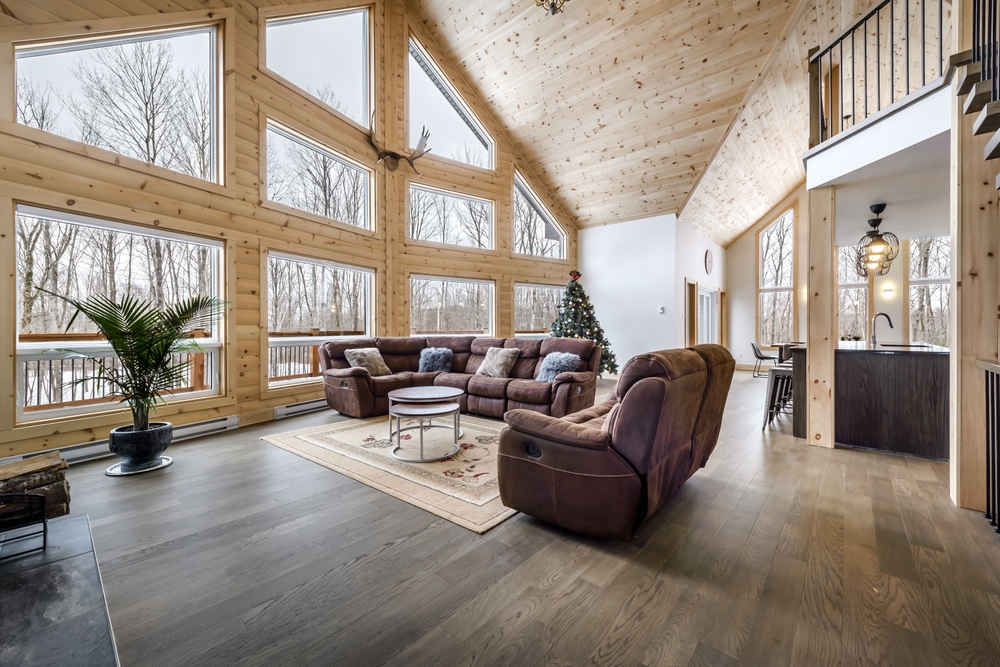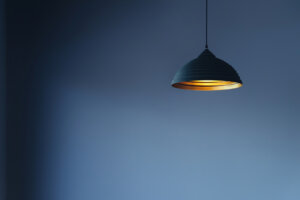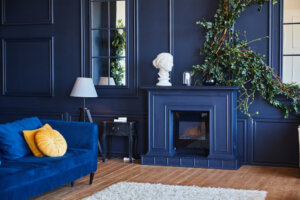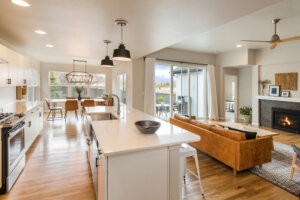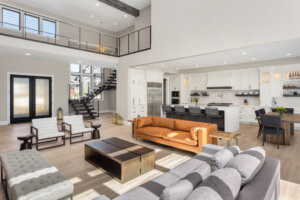Adding a fresh coat of paint is one of the easiest ways to completely transform a room. While there is much to consider when picking the perfect colour, one crucial element is often overlooked — lighting. Artificial and natural light sources can dramatically change how the paint looks in a room from hour to hour. To ensure the colour you picked ends up looking the way you want it to, read through our helpful considerations before you put colour to wall.
Colour and Light
If you think back to your early school days, you probably learned that light is a spectrum of colours, made up of red, yellow, green, blue, indigo and violet. Because of this, certain colours are impacted by light more than others. For example, red and orange absorb light, making them seem richer and more saturated. Lighter colours like pastels reflect light, making them seem brighter. The lighter the colour and closer to white it is, the more reflective it will be. This is why considering your light source when choosing a paint colour is so important.
Direction of Light
It should be no surprise that the direction the light is coming from greatly impacts how your wall colour will look. If your room faces East or North, it probably gets less sunlight than other directions, making paint colours look darker and cooler. For these rooms, opt for colours that are warm and bright to balance the light coming in. If you are leaning towards a light colour, try to avoid anything with a green or grey base as these tones will be amplified and make your room look dingy.
If your room faces South you’re in luck. South facing rooms are typically full of warm light all day, so you have more flexibility when it comes to choosing a colour. Due to the warm light from the South, cooler tone colours will stand out against the warm light and your warmer colours will look more enhanced. If you’re unsure which way the light is coming from, you can always consult with a painter who can offer advice for the best colour based on your direction.
Weather
The weather will greatly impact the quality of natural light your home sees. Do you live in a rainy climate that has few sunny days? Your colours will appear heavier and darker due to the low levels of light that come through your windows. Gloomy colours will look gloomier, so keep that in mind if you’re considering a dark grey for your walls.
In contrast, if you live in a very sunny place, your colours will seem brighter and potentially washed out depending on the colour you pick. If your room is flooded with natural sunshine, a soft yellow might not stand out against the light enough and look white. Try going for a bolder colour to stand up against the sun’s rays.
Time of Day
When you go to paint a room, think about when you will be using this room as the time of day greatly affects the amount and quality of light. As the sun rises and sets, it will affect the paint on your walls. Think about how light changes throughout the day, from light pink hues at dawn to purple in the evening and everything in between. Try to pick a colour that will work best with the time of day you’ll be using the room the most. If it’s a room you’ll be using all day, try to find a colour that works with the lighting throughout the day and night. It can be tricky finding a colour that works well with your specific lighting throughout the entire day. Luckily, a paint specialist will be able to help you choose the right colour that will look great at every hour.
Little To No Natural Light
Not every room has a natural light source, particularly basements and bathrooms. For rooms that will be relying on artificial lighting, make an effort to choose light bulbs that will compliment your paint colour and vice versa.
LED lights have a blue hue to them and will make colours appear cooler. LED lights might clash if you are trying to create a warm and inviting space. They are great if you want your room to look brighter and make cool colours pop.
Halogen and incandescent light bulbs give off a yellow light that will make colours look warmer. Use these for rooms that are trying to achieve a cozy and inviting aesthetic.
If you want your paint to look as true to the colour as possible, opt for white coloured light bulbs. If your room requires more lighting, consider bringing in an electrician who can recommend the right additions to brighten up your space.
Almost Finished
Now that you’ve considered all possible light sources and how they will affect your paint colour, there’s one more thing to decide on: the finish. While you might not consider this as a factor, finish actually plays a big role in how lighting will affect your wall colour. To keep it simple, choose a gloss finish to reflect light and matte to absorb light.
Taking the direction, time, and source of light into consideration will help ensure the paint colour you picked looks right. If you’re concerned about finding the right colour to complement your light sources, you can always ask your painter before you get started. Good luck with finding a colour that compliments your lighting!
